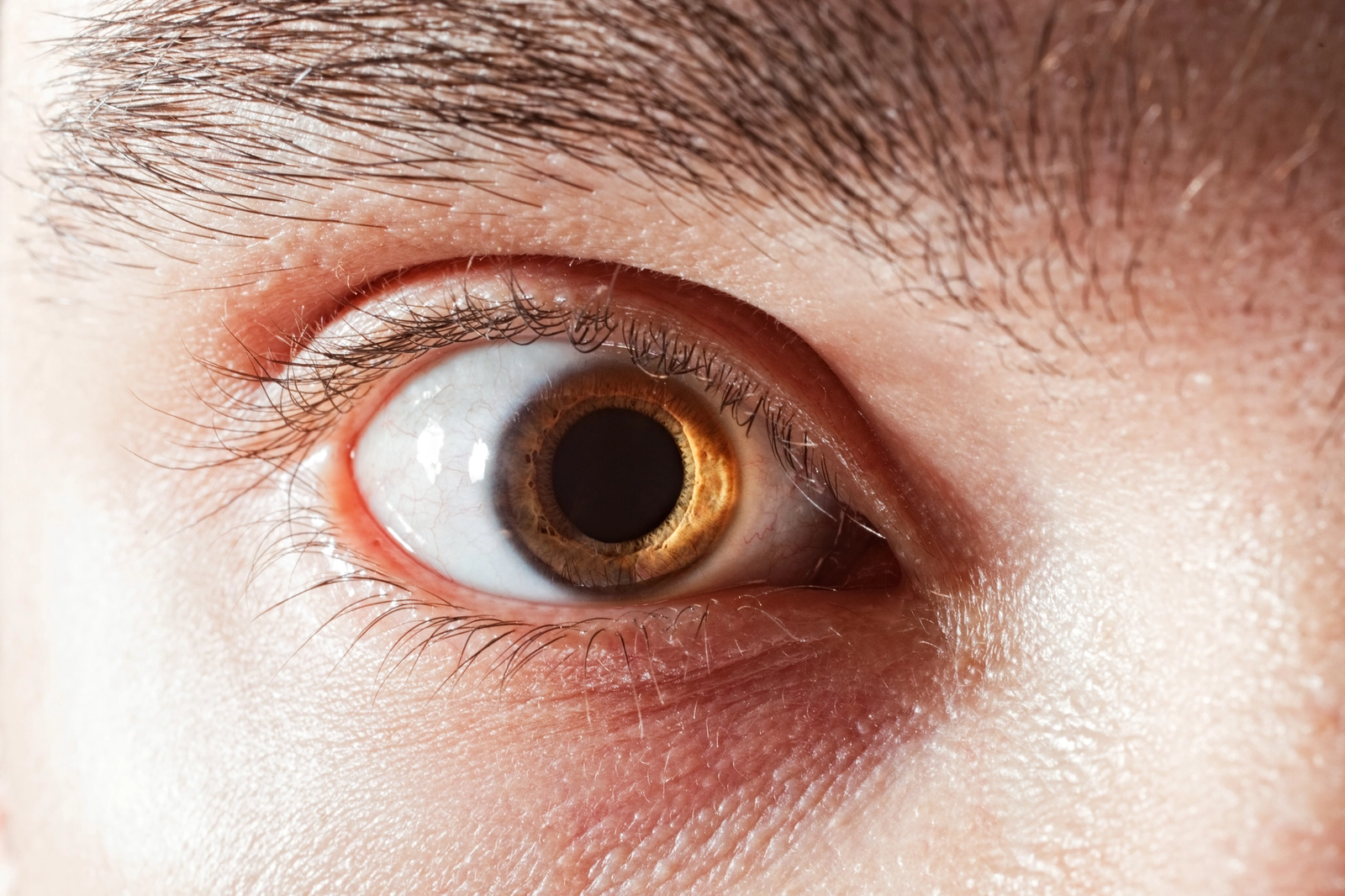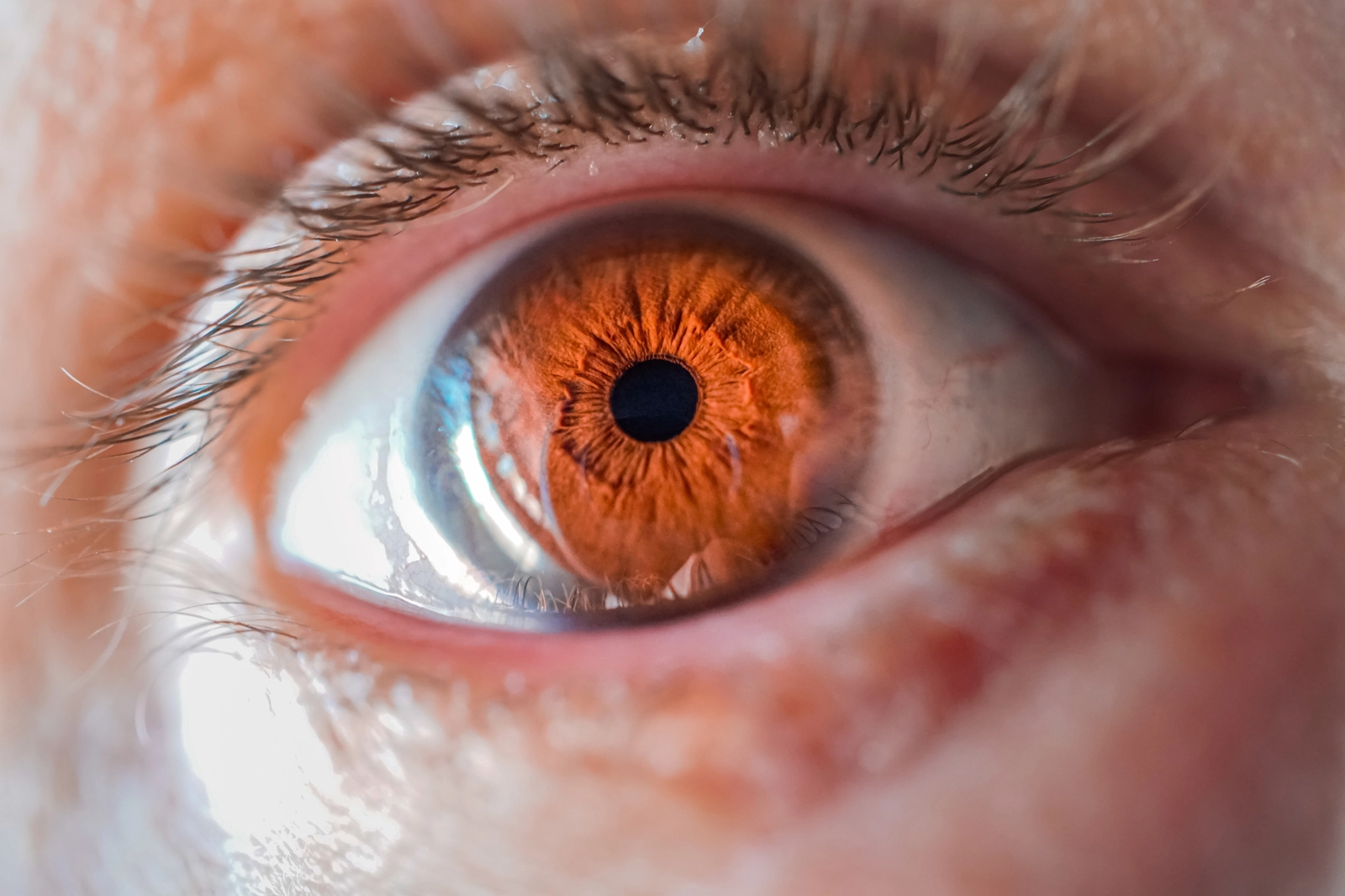Substances | 4 min read
Dilated Pupils Drugs: Drugs That May Cause Pupils to Dilate
Medically Reviewed By

On November 4, 2024
Written By
On November 4, 2024

What you will learn
- Some prescription and illicit drugs can have effects on the pupils, causing them to dilate or constrict.
- Dilated pupils can also occur from drug abuse and appropriate use of prescription medications.
- Some drugs, like opioids, can cause pinpoint pupils (constriction) instead of dilation.
- While pupil dilation is not a sign of drug abuse or misuse on its own, it can be among the signs to look out for with certain drugs.
Drugs, both prescription and drugs of abuse, can have a range of effects on your physical and mental health. One of the most significant appearance changes is the eyes, including the pupil’s size and motion.
Consistent substance abuse can lead to constriction or dilation of the eyes – a telltale sign. However, there are other causes of dilated pupils to be aware of.
What Causes Pupils to Dilate?
Pupils are the dark parts of your eye that grow or shrink based on the lighting conditions. They dilate (expand) in dim light, allowing more light to enter the retina so you can see. They constrict (shrink) in bright light to protect your eye. The technical term for dilated pupils is mydriasis.
Other factors can affect pupil size, such as certain health conditions, brain and eye injuries, your mental and emotional state, and prescription and misused drugs.[1]
What Drugs Cause Pupils to Dilate?
Drugs can affect the muscles that shrink or expand the pupils. Here are some prescription and over-the-counter (OTC) drugs that can cause the pupils to dilate:
- Anticholinergics: Drugs that block the action of acetylcholine, a neurotransmitter involved in muscle contractions.[2]
- Anticonvulsants and antiepileptics: Antiepileptics, including barbiturates like phenobarbital, work by impacting neurotransmitter activity or nerve impulses in the brain.[3]
- Antidepressants: Tricyclic antidepressants affect serotonin and norepinephrine, which influence bodily functions, including eye movement.
- Antihistamines: Antihistamines block the action of histamine, an immune system that triggers allergy symptoms like itchiness, a runny nose, and swelling.[4]
- Decongestants: Decongestants shrink the blood vessels in the nose, helping to treat swelling, inflammation, and mucus buildup.[5]
- Dopamine precursors: Dopamine precursors can increase dopamine synthesis.[6]
- Mydriatics: Mydriatics are drugs that cause pupil dilations for eye exams and surgeries.[7]
- Stimulants: Stimulants, such as Ritalin and Adderall, are used in the treatment of attention deficit hyperactivity disorder (ADHD) and cause pupils to dilate.[8]
- Selective serotonin reuptake inhibitors (SSRIs): SSRIs enhance the effects of serotonin in the brain and are used to treat depression.[9]
Drug Abuse or Misuse That Can Dilate the Pupils
Misusing or abusing different substances can have adverse effects on the eyes, including dilated pupils. Some drugs can have severe consequences, such as vision loss with alcohol consumption.
Some substance-related eye changes occur within minutes of using the drug, such as bloodshot eyes with marijuana use, while others may happen over time.
The type of drug and the severity of the eye changes can depend on the substance and method of use. Some of the drugs that cause dilated pupils and other eye changes include:
- Amphetamines
- Cocaine and crack cocaine
- Crystal meth
- MDMA (ecstasy)
- LSD
- Mescaline
- Bath salts
These drugs may affect the central nervous system or the brain’s neurotransmitters, causing dilated pupils. For example, drugs that stimulate serotonin agonize the 5-HT2A receptors in the brain, leading to dilation. Stimulants like amphetamines speed up the central nervous system, causing the pupils to dilate.
What Drugs Cause Pinpoint Pupils?
While many drugs dilate the pupils, some can have the opposite effect and cause “pinpoint” pupils. Opioids, including fentanyl, morphine, heroin, and oxycodone, are commonly misused drugs that can cause pupils to constrict.[10] This is known as miosis.
Pinpoint pupils won’t respond to changes in lighting, which is often a sign of an opioid overdose. If you suspect someone is overdosing, call 911. An opioid overdose is a medical emergency and can be fatal.
Can a Drug Cause Permanent Pupil Dilation?
Pupil dilation caused by drug use typically happens when the drug’s effects begin. The pupils usually return to normal size after the drug’s effects have worn off, but it can depend on the drug. For opioids like heroin, pupil dilation can be a sign of withdrawal.
There’s little research into any permanent effects of drug use on the eyes or permanent pupil dilation. There’s one study from 2017 that investigated a person with long-term changes in pupil size from the use of hallucinogens, but this one case isn’t enough to establish this is a long-term risk of drug abuse.[11]
How to Manage Dilated Pupils
When your pupils are dilated, they’re slow to react to lighting changes. Your eyes may be more sensitive to bright light. If your eyes are dilated regularly, they must be protected from the sun and other bright light.
Polarized lenses block the glare from sunlight reflected off light-colored surfaces like water or snow. You can also use photochromic lenses, which are prescription lenses for indoor and outdoor use that darken to protect your eyes outside.
Do I Need Medical Attention for Dilated Pupils?
Ask your doctor or pharmacist for advice if your pupils dilate from prescription medication. Though it’s a side effect of some drugs, it’s important to understand why your pupils are dilated.
If you notice dilated pupils in a loved one, it’s a concern for drug abuse or substance use disorder.
Is Pupil Dilation a Sign of Drug Use?
Pupil dilation is considered a clear sign of drug use, but it’s an imperfect method to determine if someone is misusing or abusing drugs. It’s usually combined with other indicators that may include, depending on the drug, mood swings, weight changes, changes in appetite, sleep patterns, physical appearance, and unusual behaviors.
Aside from appearance and mood, there may be other signs of drug use, like ongoing financial problems without explanation, social isolation, visiting multiple doctors, problems at work or school, and lying.
If there is a suspicion of substance misuse, law enforcement and medical teams have an official chart, the “Drug Recognition Card,” that shows images of how pupils react to different drugs.[12] It’s based on the standards set by the International Association of Chiefs of Police (IACP). It offers a reference to assess substance abuse based on common categories like depressants, stimulants, hallucinogens, opioids, inhalants, cannabis, and phencyclidine.
Getting Help for Substance Abuse
If you or someone you care about is showing the signs of substance misuse or addiction, help is available. Addiction can be difficult to overcome on your own, and with some drugs, it may even be dangerous without professional help.
Addiction treatment centers offer a full continuum of care for substance abuse involving different drugs, including detox, inpatient and outpatient care, and therapies like talk therapy, behavioral therapies, and support groups.
Concerns About Dilated Pupils?
Both prescription and nonprescription drugs can lead to dilated or constricted pupils. Some drugs have dilation as a side effect, while others cause pupil dilation when they’re misused or abused. Pupils often return to their normal size once the effects of the drug wear off, but other adverse effects are possible. It’s important to get help for substance abuse or addiction as early as possible to avoid serious health problems.
Frequently Asked Questions About Pupil Dilation
Several drugs can cause the pupils to dilate, including antihistamines, benzodiazepines, stimulants, marijuana, hallucinogens, and some sedatives.
Opioid drugs, or narcotics, can cause the pupils to constrict in a pinpoint appearance. These can include both legal prescription opioids and illicit opioids, such as morphine, hydrocodone, fentanyl, and heroin. An opioid overdose can also lead to pinpoint pupils and eyes that don’t respond to changes in light at all.
Dilated pupils can be a symptom of many conditions or a side effect of various drugs. If your pupils remain dilated or are unequal in size, it can indicate a serious condition affecting the brain, such as a stroke, a tumor, or internal bleeding.[13] Seek medical attention if you’re concerned about your pupils.
Nicknamed “bipolar eyes” or “manic eyes,” bipolar disorder can cause pupils to dilate or the eyes to have a sparkling or liquid appearance.[14] There are also anecdotes of the manic phase changing eye color or causing eyes to look black. This is likely caused by the energetic or excited moods that happen with mania.
Ascendant New York Editorial Guidelines
Here at Ascendant New York, we understand the importance of having access to accurate medical information you can trust, especially when you or a loved one is suffering from addiction. Find out more on our policy.
[1] Graur, S., & Siegle, G. (2013). Pupillary Motility: Bringing Neuroscience to the psychiatry clinic of the future. Current Neurology and Neuroscience Reports, 13(8). https://doi.org/10.1007/s11910-013-0365-0 on 2024, September 24.
[2] L;, S. H. (n.d.). Mydriatic effect of anticholinergic drugs used during reversal of nondepolarizing muscle relaxants. American journal of ophthalmology. Retrieved from https://pubmed.ncbi.nlm.nih.gov/484693/ on 2024, September 24.
[3] Carreño, M., Bootsma, H. P., Perucca, P., Jakubus, T., Mandelbaum, D. E., Mula, M., Annegers, J. F., Christensen, J., Smith, E. G., Hamed, S. A., Khanna, S., Thomas, S. V., Meador, K. J., Battino, D., Tomson, T., Juruena, M. F., Lossius, M. I., … Björnsson, E. (2011, November 22). Antiepileptic drugs. Side Effects of Drugs Annual. Retrieved from https://www.sciencedirect.com/science/article/abs/pii/B9780444537416000076 on 2024, September 24.
[4,5,7,8,9]Concerned about dilated pupils? causes and treatment. American Academy of Ophthalmology. (2023, May 5). Retrieved from https://www.aao.org/eye-health/tips-prevention/dilated-pupils-causes-worry-concerned-treatment on 2024, September 24.
[6] Spiers, A. S., & Calne, D. B. (1969, November 8). Action of dopamine on the human iris. British medical journal. Retrieved from https://www.ncbi.nlm.nih.gov/pmc/articles/PMC1629580/ on 2024, September 24.
[10] professional, C. C. medical. (2024, August 26). Eye miosis (constricted pupils): Causes & treatment. Cleveland Clinic. Retrieved from https://my.clevelandclinic.org/health/symptoms/23575-eye-miosis on 2024, September 24.
[11] Al-Imam, Ahmed, Could Hallucinogens Induce Permanent Pupillary Changes in (Ab)users? A Case Report from New Zealand, Case Reports in Neurological Medicine, 2017, 2503762, 5 pages, 2017. Retrieved from https://onlinelibrary.wiley.com/doi/epdf/10.1155/2017/2503762 on 2024, September 24.
[12] An evaluation of pupil size standards used by … (n.d.-a). Retrieved from https://www.theiacp.org/sites/default/files/all/i-j/JAOA Pupil Size paper Richman.pdf on 2024, September 24.
[13] Dilated pupil. UCLA Health. (n.d.). Retrieved from https://www.uclahealth.org/medical-services/ophthalmology/eye-signs-and-symptoms/dilated-pupil#:~:text=Immediate%20medical%20care%2C%20however%2C%20should,%2C%20internal%20bleeding%2C%20or%20tumor on 2024, September 24.
[14] Parker, G., Coroneo, M. T., & Spoelma, M. J. (2023, November). Bipolar eyes: Windows to the pole?. The Australian and New Zealand journal of psychiatry. Retrieved from https://www.ncbi.nlm.nih.gov/pmc/articles/PMC10619177/ on 2024, September 24.




